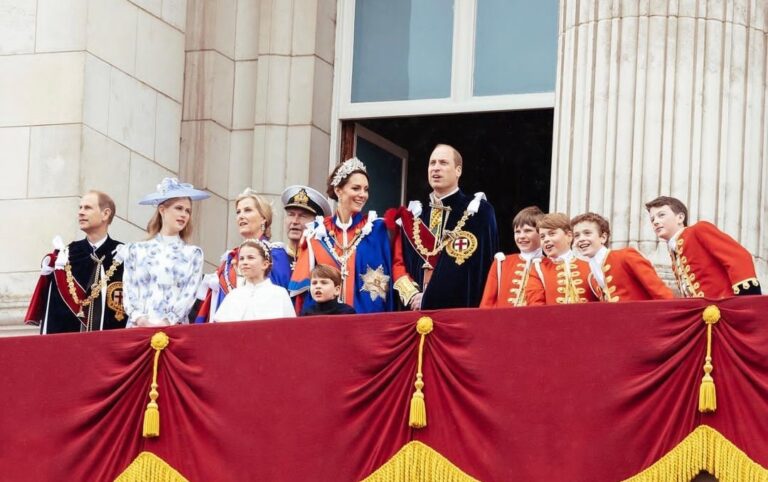The line of succession to the throne of the United Kingdom was established first by the Act of Settlement of 1701, then by the Succession to the Crown Act of 2013 and by common law. After Charles, therefore, there is a pre-established order of succession for the heirs to the throne.
After the recent announcement of the monarch’s illness, suffering from cancer, new scenarios emerge regarding the future of the English monarchy. One prospect is that King Charles abdicates. The second is that that the Recency Act comes into effect, whereby the sovereign’s duties will be shared by Queen Camilla and the other Councilors of State.
However, underlying the legacy of the royal scepter, there are strict rules to follow. For those born before April 28, 2011, the rule of precedence of men over women was valid, even when the latter were older.
Table of Contents
The line of succession after Charles III
After Charles III, the first on the line of succession will be Prince William, the eldest son born from his marriage to Princess Diana.
After him, there are the children he had with Catherine Middleton (George, Charlotte and Louis). In the line of succession, Prince Harry comes only after the three Princes of Wales. He is followed by the two children he had with Meghan Markle.
Queen Elizabeth’s other children occupy position eight onwards on the list. The order of succession after King Charles is as follows:
- William, Prince of Wales
- Prince George (son of William and Catherine Middleton, born 2013)
- Princess Charlotte (daughter of William and Catherine Middleton, born 2015)
- Prince Louis (third son of William and Catherine Middleton, born 2018)
- Prince Harry, Duke of Sussex
- Archie Mountbatten-Windsor (Harry and Meghan Markle’s eldest son, born 2019)
- Lilibet Mountbatten-Windsor (daughter of Harry and Meghan Markle, born 2021)
- Prince Andrew, Duke of York (son of Queen Elizabeth II and brother of Charles III)
- Princess Beatrice of York (Andrew’s daughter)
- Sienna Elizabeth Mapelli Mozzi (daughter of Beatrice of York and Edoardo Mapelli Mozzi)
- Princess Eugenie of York (Andrew’s second daughter)
- August Brooksbank (son of Eugenie and Jack Brooksbank)
- Ernest Brooksbank (second son of Eugenie and Jack Brooksbank)
- Prince Edward (Duke of Edinburgh, son of Elizabeth II)
- James Windsor (Earl of Wessex, son of Prince Edward)
- Lady Louise Windsor (daughter of Prince Edward)
- Princess Anne (daughter of Elizabeth II, sister of King Charles III)
- Peter Phillips (son of Princess Anne and her first husband, Mark Phillips)
- Savannah Phillips (daughter of Peter Phillips)
- Isla Phillips (second daughter of Peter Phillips)
- Zara Tindall (daughter of Princess Anne and Mark Phillips)
The rules for succession to the throne
The rules for succession to the throne of England are set out in the Act of Settlement 1701, the Succession to the Crown Act 2013 and the Common Law.
The Act of Settlement of 1701 was ousted by the Royal Marriages Act of 1772. It provided that a monarch of the Catholic religion or who had married a person of the Catholic religion had to renounce the throne, thus losing his prerogatives.
In this way, the act limited the entry of non-Protestant people into the succession to the throne. The act played a key role in the establishment of the Kingdom of Great Britain.
The Royal Marriages Act of 1772 instead established that no descendant of King George II (male or female, with the exception of descendants of princesses who entered other royal families through marriage) could marry without the consent of the reigning monarch.
The consent had to be attached to the license and in the marriage register. Any marriage contracted without consent would be null and void. According to the act, it was a crime to “contract or attend an unapproved marriage of any member of the royal family.” The Criminal Law Act 1967 repealed the provision.
The Succession to the Crown Act of 2013 changed male preference primogeniture to absolute primogeniture. Therefore, no distinction between male and female.
For people in the line of succession born after 28 October 2011, therefore, gender no longer prevails over the date of birth. The eldest child, regardless of sex, precedes any siblings. The Royal Marriages Act 1772 was also repealed, ending the exclusion from the line of succession of royals married to Catholics.
Read also: How rich is King Charles III and what he inherited by becoming monarch












